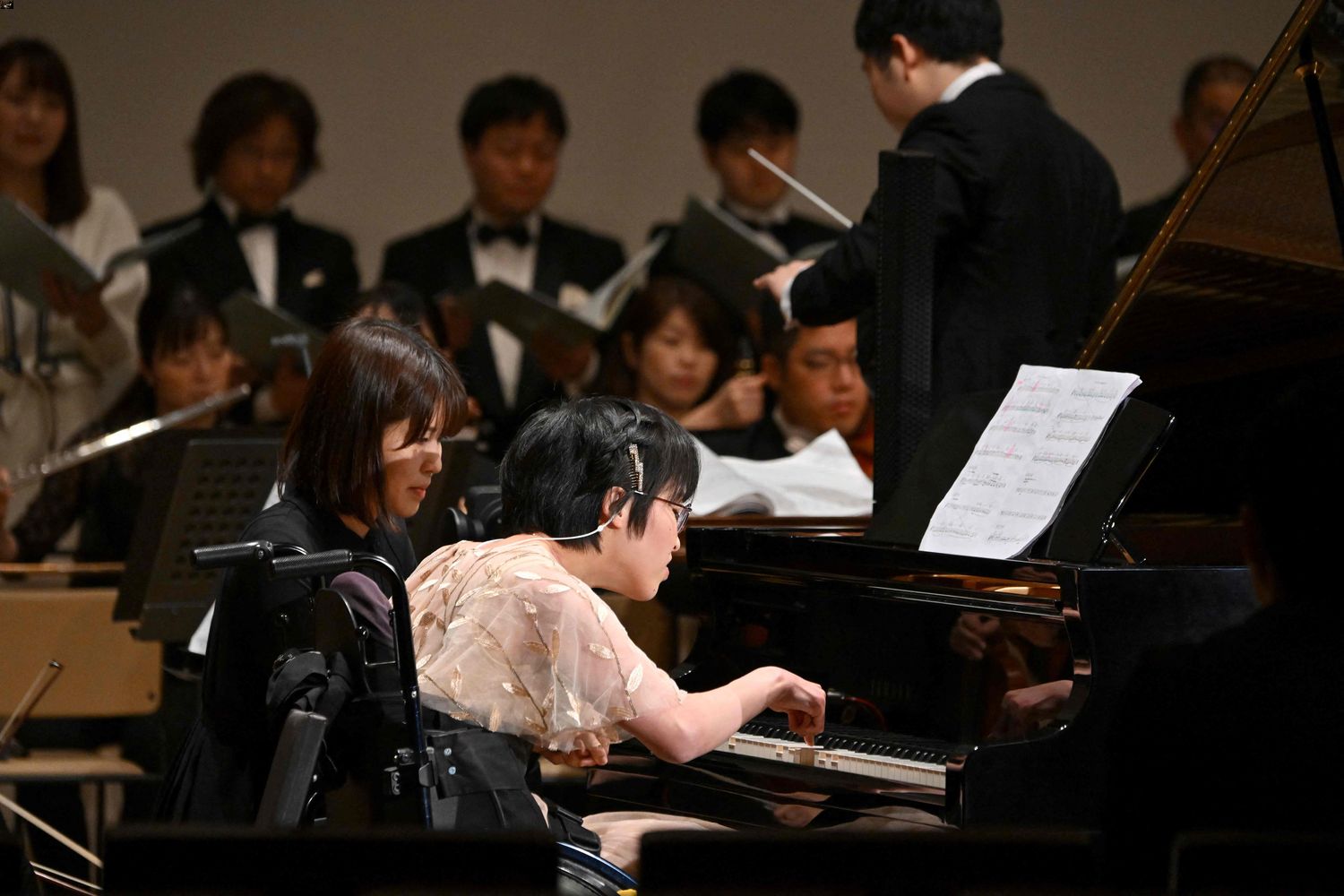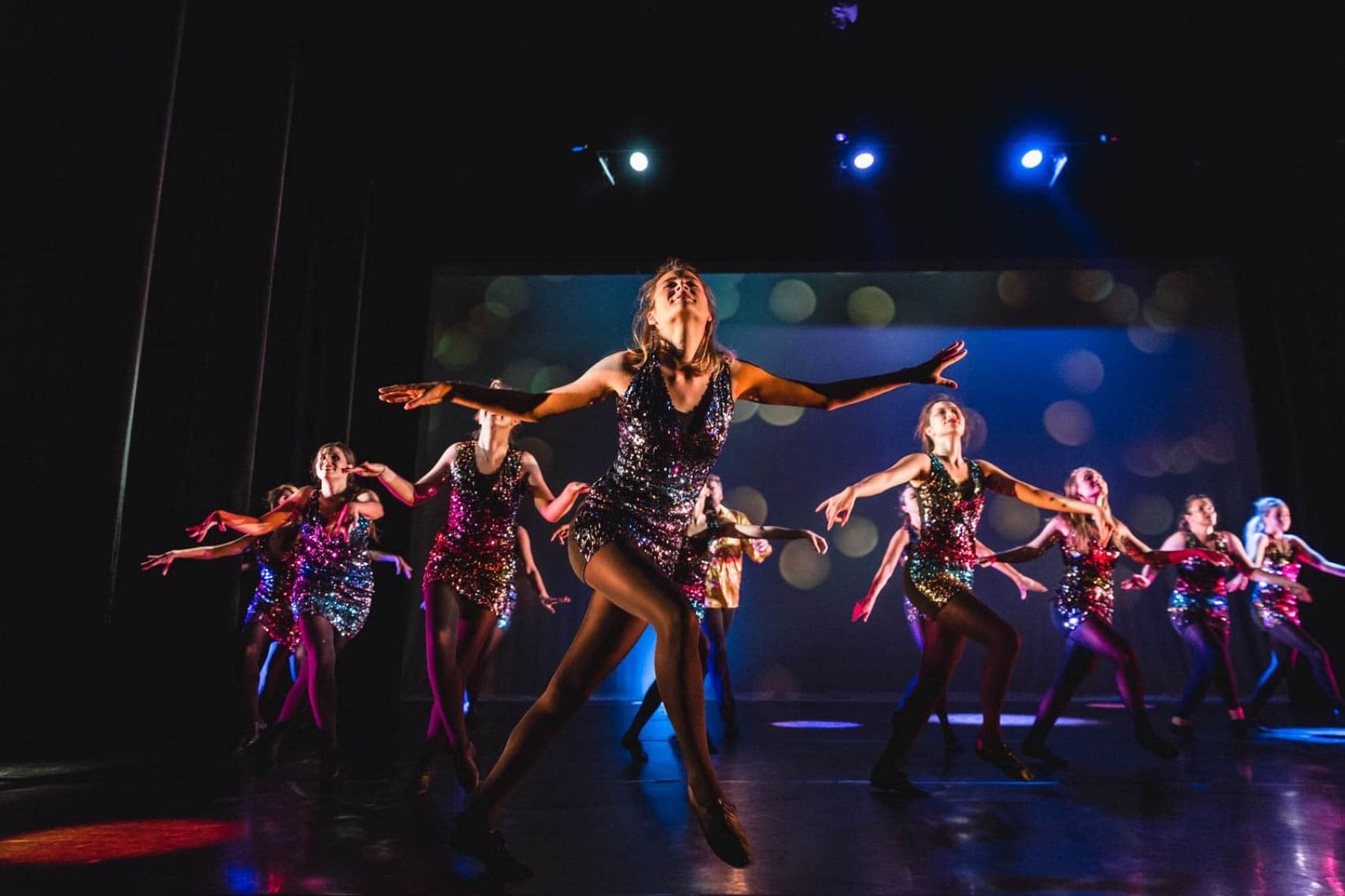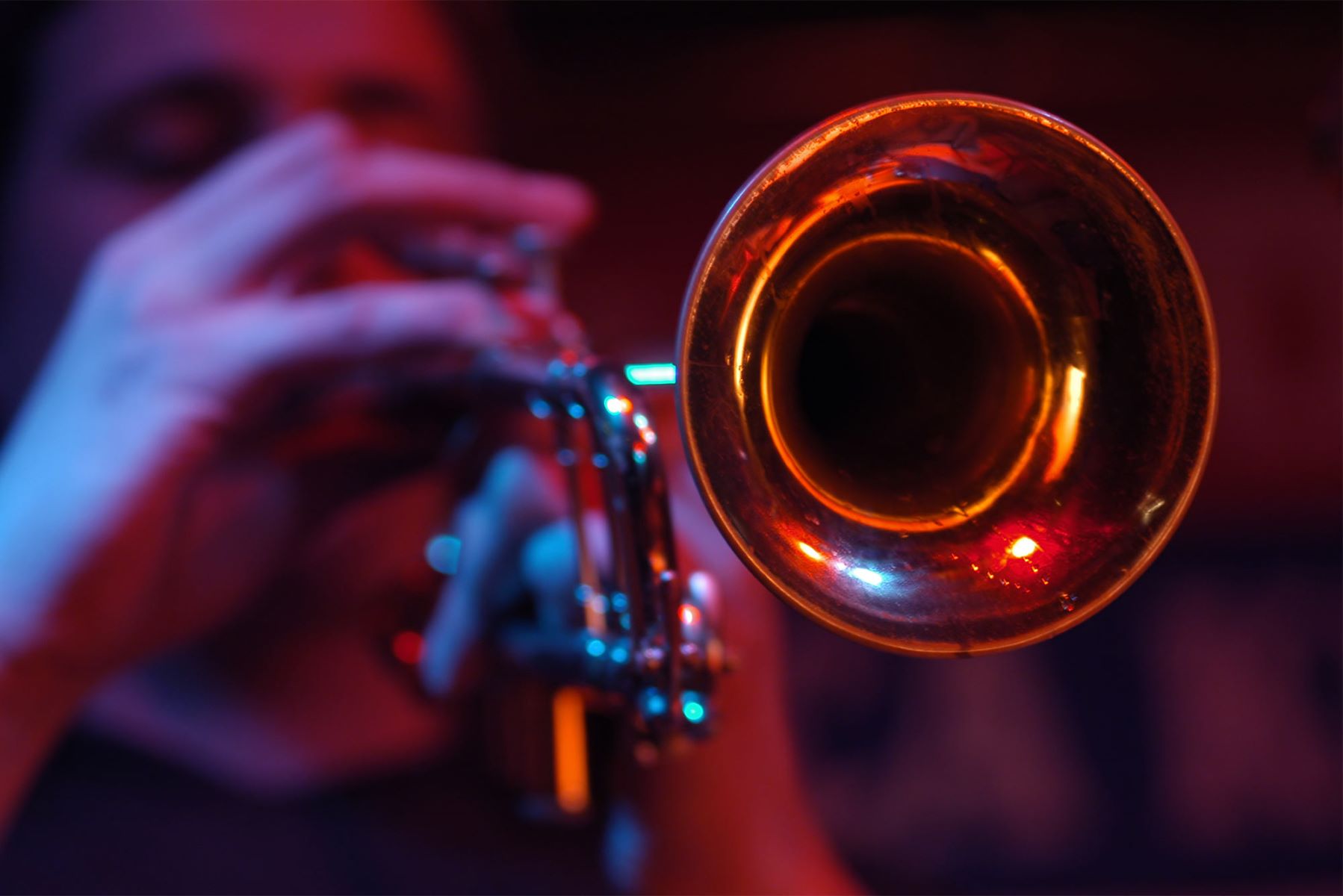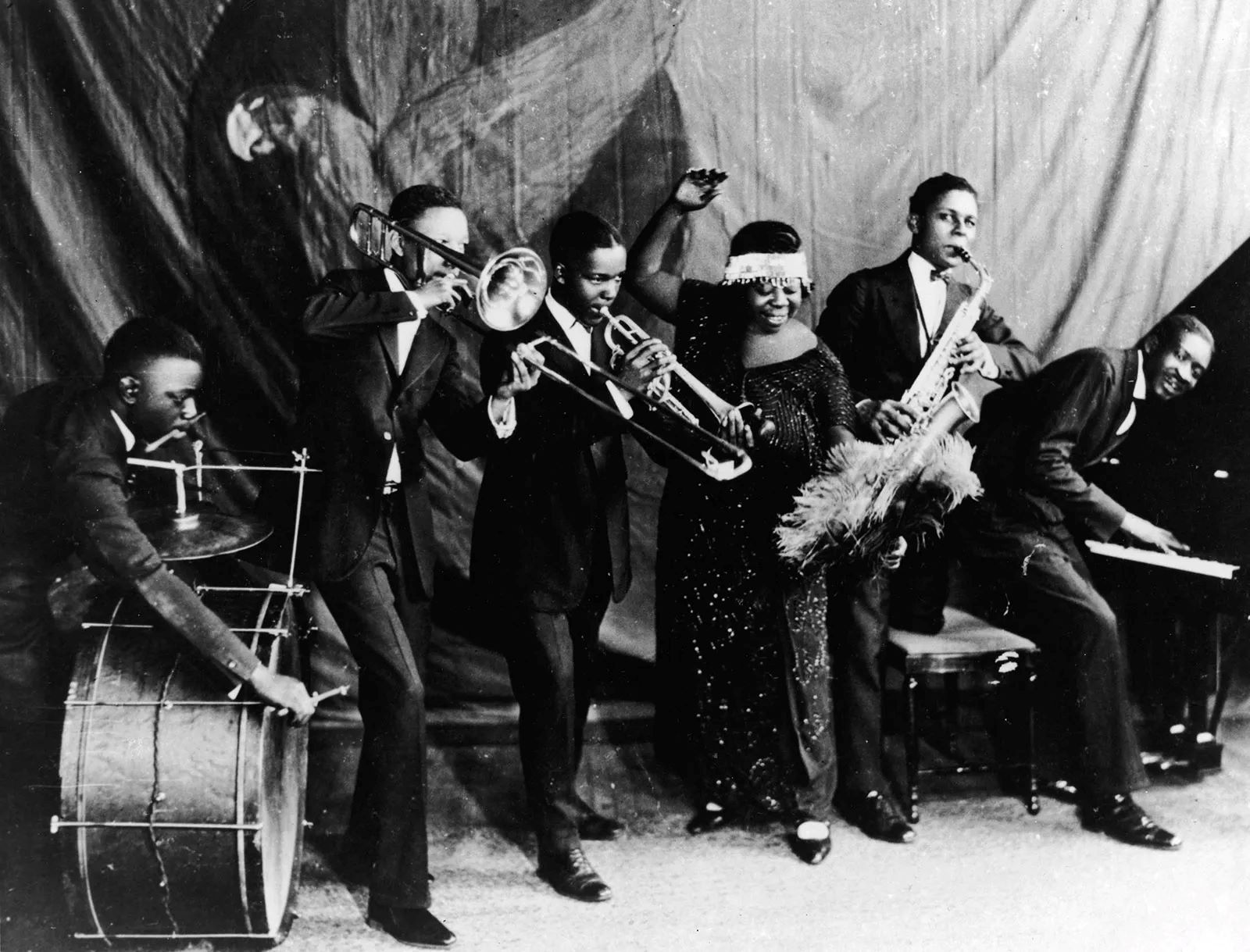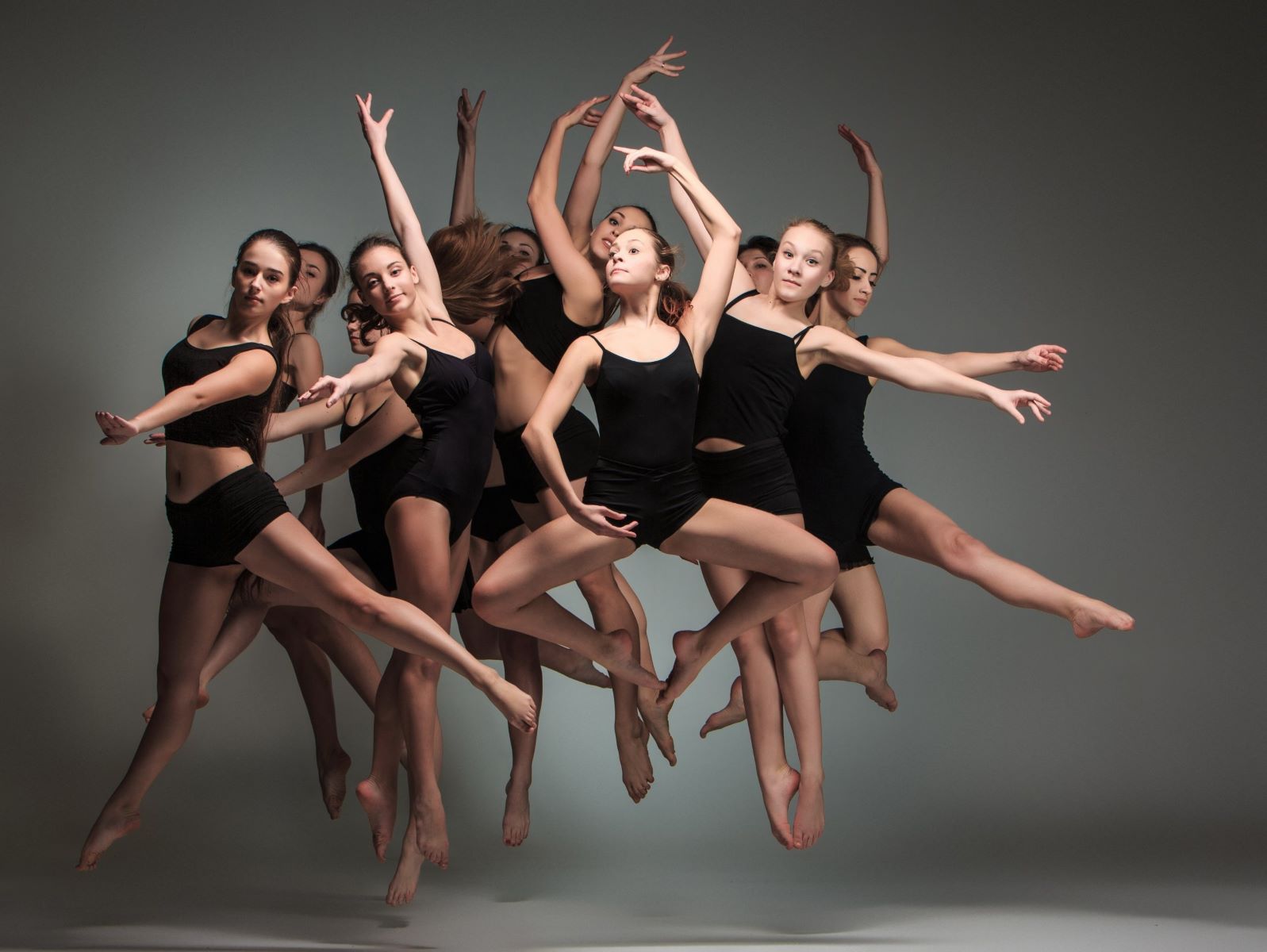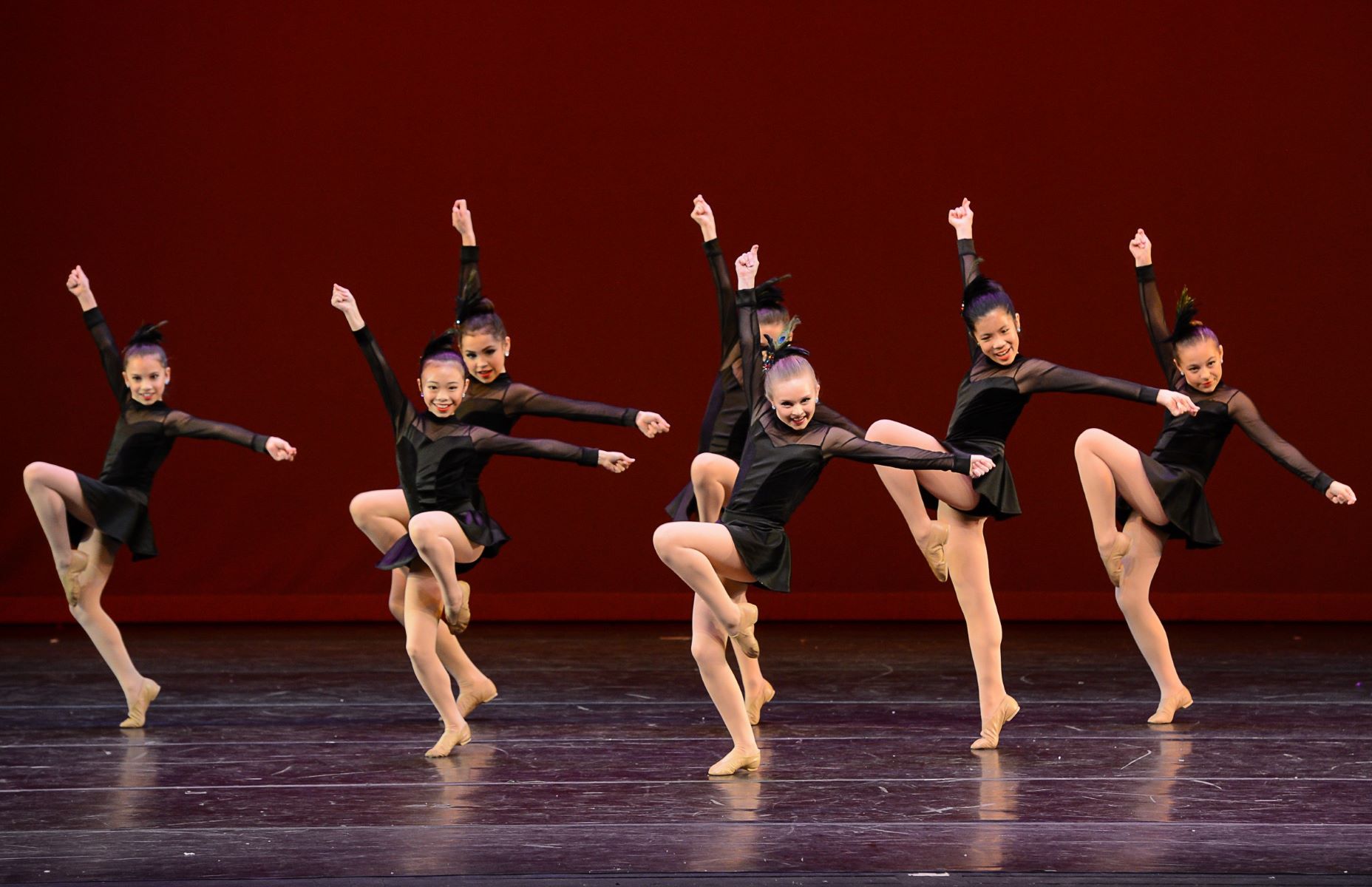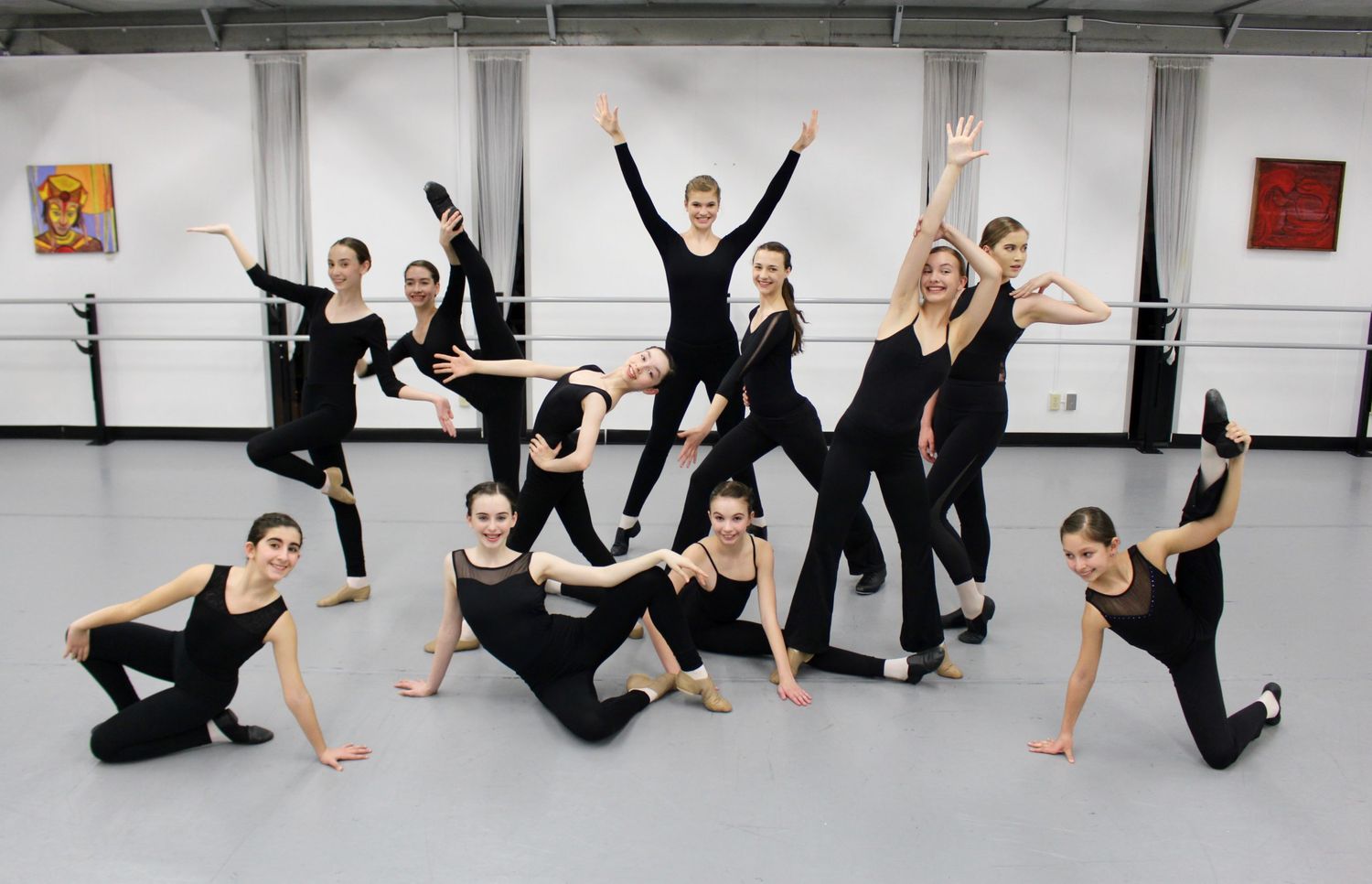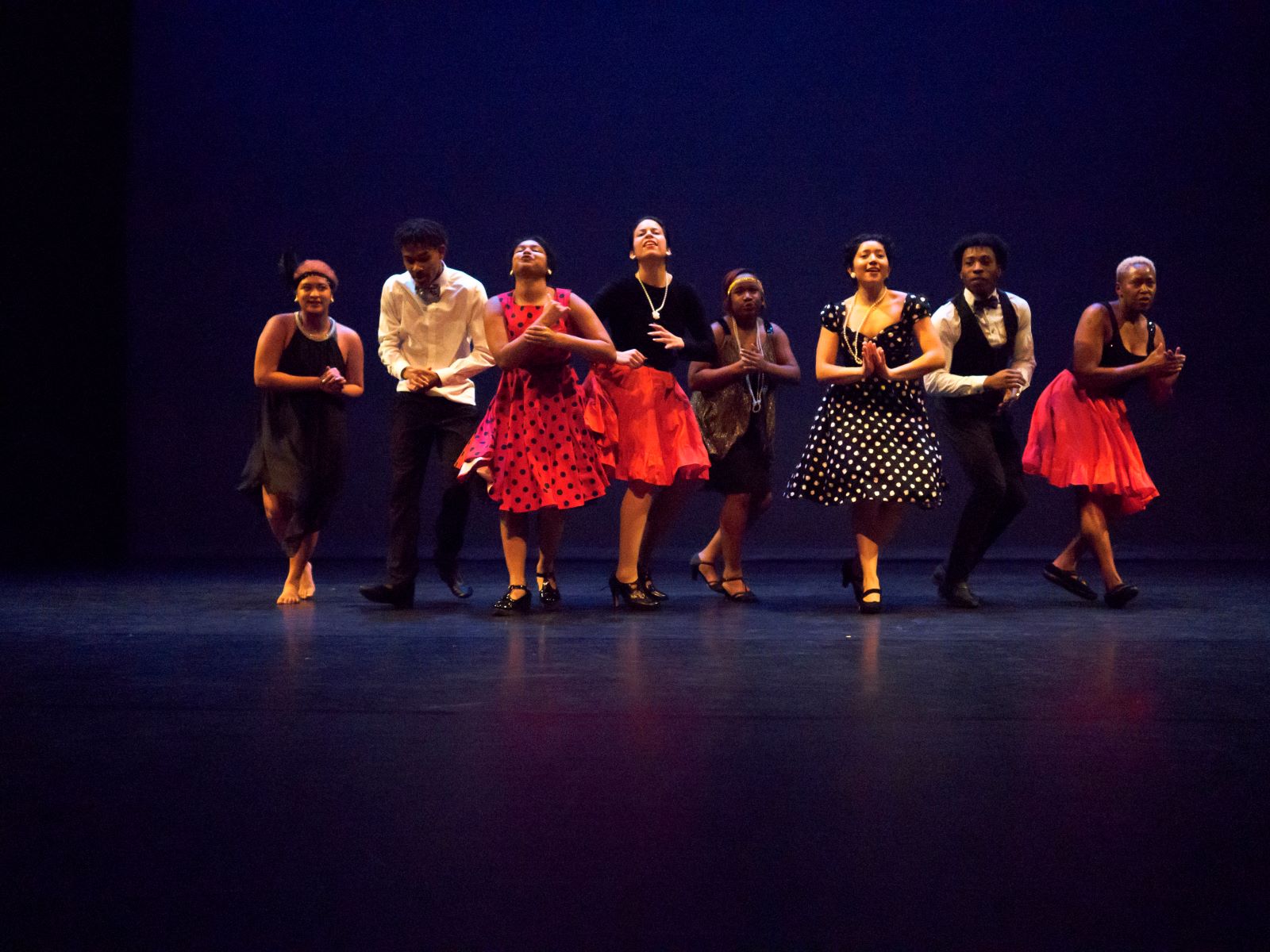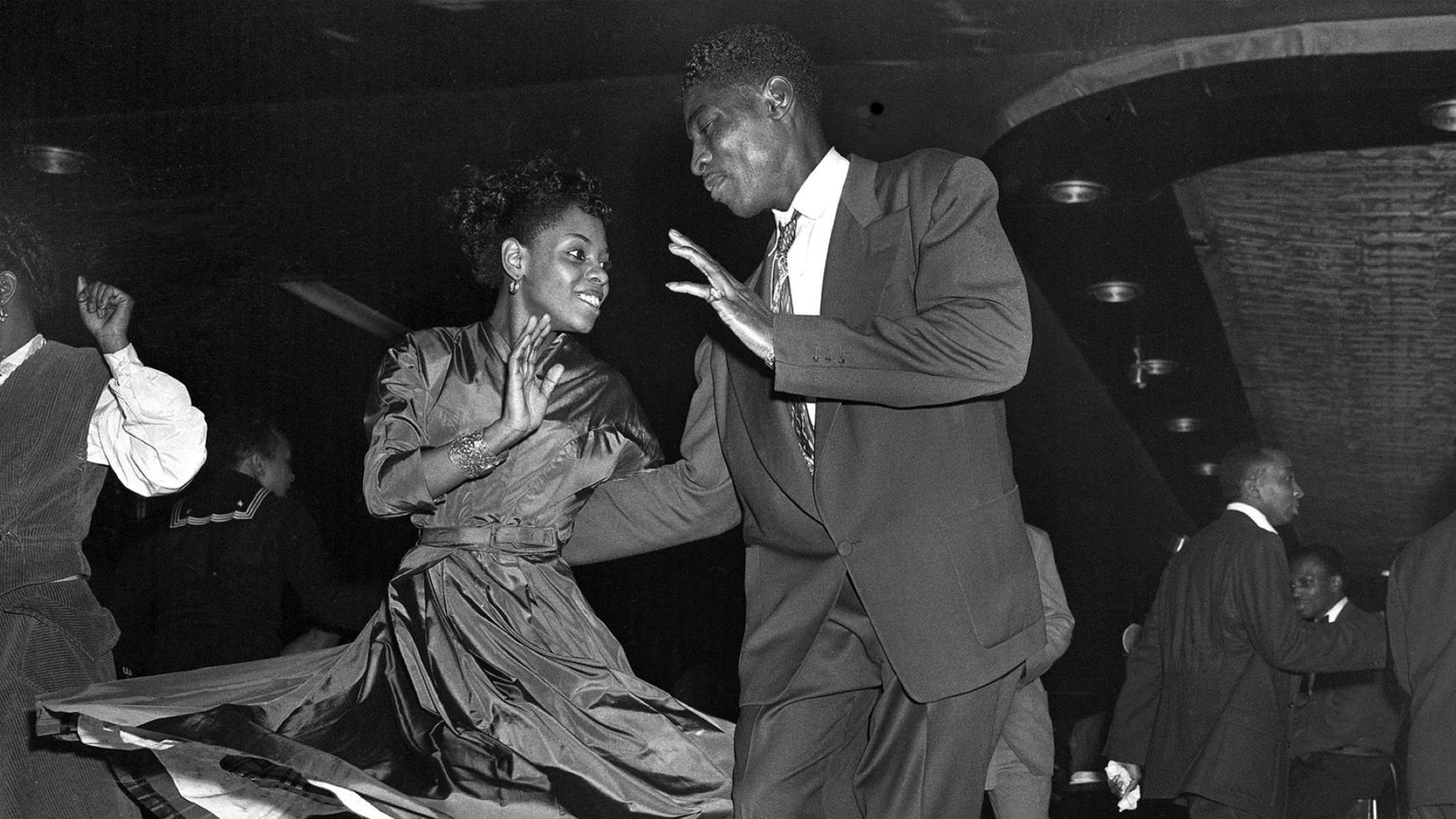

Jazz
When Did Jazz Dance Start
Modified: January 22, 2024
Discover the origins of jazz dance and how it evolved into a popular form of expression. Learn about the pioneers and influential artists that shaped this vibrant genre.
(Many of the links in this article redirect to a specific reviewed product. Your purchase of these products through affiliate links helps to generate commission for AudioLover.com, at no extra cost. Learn more)
Table of Contents
- Introduction
- Roots of Jazz Dance
- African Influence on Jazz Dance
- European Influence on Jazz Dance
- Emergence of Jazz Music
- Early Forms of Jazz Dance
- Harlem Renaissance and Jazz Dance
- Influence of Tap Dance on Jazz Dance
- Jazz Dance in Hollywood
- Influence of Jazz Music on Jazz Dance
- Contemporary Jazz Dance
- Conclusion
Introduction
Jazz dance is a vibrant and energetic art form that has captivated audiences for decades. With its origins rooted in African and European traditions, it is a unique expression of rhythm, movement, and musicality.
This article delves into the fascinating history of jazz dance, tracing its roots from early African rituals to its evolution into a widespread dance style. We will explore the emergence of jazz music and its influence on the development of jazz dance as well as the key figures and events that have shaped its trajectory.
Throughout its history, jazz dance has undergone numerous transformations, adapting to cultural shifts and blending with other dance styles. From its early forms in African tribal dances and European social dances to its integration with tap dance and its role in popular culture, jazz dance has continuously evolved, bridging the gap between tradition and innovation.
By dissecting the various elements that contributed to the rise of jazz dance, such as the Harlem Renaissance and the influence of tap dance, we gain a deeper appreciation for its rich heritage and significance within the realm of dance and music.
Moreover, we will explore the impact of jazz music on jazz dance, examining how the syncopated rhythms and improvisational nature of the music influenced the choreography and artistic expression of jazz dancers. This dynamic relationship between music and movement has allowed jazz dance to constantly reinvent itself and remain relevant throughout the years.
Lastly, we will touch on the current state of jazz dance and its place in contemporary dance culture. As an evolving art form, jazz dance continues to push boundaries and fuse elements from various dance styles, creating a diverse and exciting range of expressions that delight audiences worldwide.
So, join us as we embark on a journey through time, exploring the origins, development, and impact of jazz dance. Through this exploration, we hope to shed light on the beauty, complexity, and enduring legacy of this captivating dance form.
Roots of Jazz Dance
The roots of jazz dance can be traced back to a fusion of African and European dance traditions. This unique blend of cultures contributed to the rich and diverse movements that characterize jazz dance today.
African dance played a significant role in shaping jazz dance, as it brought with it a rich history of rhythm and movement. African tribal dances were not only a form of expression but also an integral part of social and religious ceremonies. These dances were characterized by intricate footwork, polyrhythmic patterns, and a deep connection to the music. The strong emphasis on syncopation and improvisation in African dance laid the foundation for the rhythmic complexity and spontaneity that are central to jazz dance.
On the other hand, European dance forms, such as ballet and social dances, also influenced the development of jazz dance. Ballet introduced elements of grace, technique, and structured movements, which blended harmoniously with the lively and expressive African dance styles. The European influence brought a sense of refinement and precision to the fluid and dynamic movements of jazz dance.
These two distinct cultural influences converged during the era of slavery in the United States. African slaves brought their cultural traditions with them, which eventually merged with the European dances brought by colonizers. The resulting fusion of cultures gave rise to a new form of dance that embodied the spirit of resilience and freedom.
During this period, the syncopated rhythms of African drumming became intertwined with European musical styles, such as ragtime and blues. This fusion of music and dance created a vibrant and infectious energy that became the essence of jazz dance.
From the plantations of the American South to the streets of bustling cities like New Orleans and Chicago, jazz dance began to take shape as a communal expression, often performed in social gatherings and clubs. It was an art form that transcended racial boundaries and brought people from all walks of life together through the shared language of movement and music.
As jazz music gained popularity and the world entered the era of the Roaring Twenties, jazz dance started evolving in tandem with the music. The spirit of improvisation and individual expression became central to jazz dance, inspiring dancers to break away from traditional dance forms and embrace a more freestyle approach. This marked the beginning of a new era in the evolution of jazz dance, setting the stage for its future development and innovation.
African Influence on Jazz Dance
The African influence on jazz dance is profound, as it forms the very foundation of this vibrant and dynamic art form. The rich traditions and cultural practices of African tribes played a significant role in shaping the movements, rhythms, and spirit of jazz dance.
African dances are deeply rooted in the social, spiritual, and ceremonial practices of various tribes. They were not merely recreational activities but integral parts of daily life. These dances served as a means of communication, storytelling, and religious rituals, embodying the collective experiences and traditions of the African people.
The most notable characteristic of African dance that found its way into jazz dance is its emphasis on rhythm and syncopation. African drumming and percussion instruments provided the pulse and heartbeat of the dance, guiding the movements and inspiring improvisation. The complex polyrhythms and intricate footwork of African dances laid the foundation for the syncopated rhythms and energetic footwork that are synonymous with jazz dance.
Furthermore, African dance featured a strong connection between the body and the music. Dancers would respond to the rhythms and melodies with their entire being, using their limbs, torso, and facial expressions to convey emotions and tell stories. This close relationship between music and movement found its way into jazz dance, where dancers use their bodies as instruments, interpreting the music through their expressive gestures and dynamic movements.
In addition to rhythm, African dance also imbued jazz dance with a sense of communal spirit and celebration. African dances were often performed as collective expressions, with members of the community coming together in unity and harmony. This spirit of togetherness and joy became central to jazz dance, fostering a sense of connection and camaraderie among dancers.
The influence of African dance on jazz dance can be seen in various styles and techniques. For example, the polyrhythmic footwork of African dances can be observed in the intricate footwork and syncopated steps of jazz dance. Additionally, the dynamic movements and body isolations commonly seen in African dance find their way into jazz dance choreography, adding flair and personality to the performances.
Overall, the African influence on jazz dance is undeniable, as it provided the roots from which this art form blossomed. By embracing the rhythms, spirit, and communal nature of African dance, jazz dance has become an expression of freedom, individuality, and cultural diversity.
European Influence on Jazz Dance
While the African influence forms the rhythmic and expressive core of jazz dance, the European influence introduced structure, technique, and refinement to this captivating art form. European dance traditions, such as ballet and social dances, played a significant role in shaping jazz dance as we know it today.
Ballet, with its emphasis on grace, technique, and precision, brought a sense of formality and discipline to jazz dance. The exquisite lines, poise, and control of ballet dancers influenced the fluidity and gracefulness of jazz dance movements. Ballet training provided jazz dancers with a strong foundation in technique, enhancing their ability to execute complex footwork, leaps, and turns with ease and precision.
Moreover, the European influence on jazz dance can be observed in the incorporation of social dances. As European settlers brought their social dance traditions to countries like the United States, these dances began to merge with the African movement styles, creating a unique fusion of cultures. Social dances such as the Charleston, the Foxtrot, and the Lindy Hop became influential in the development of jazz dance, adding elements of partner work, syncopated rhythms, and joyful expressions.
The European influence also extended to the costumes and presentation of jazz dance. The elegance and glamour associated with European ballroom dancing made their way into the costumes worn by jazz dancers. From sequined dresses to tuxedos, the attire embraced the sophistication and style of European dance culture, enhancing the visual appeal of jazz dance performances.
Furthermore, European music styles like ragtime and blues played a significant role in the development of jazz music, which in turn influenced jazz dance. The infectious and syncopated rhythms of ragtime and blues intertwined with the African rhythms, providing a melodic backdrop for jazz dancers to express themselves. The European musical traditions brought structure and melodic patterns to jazz music, influencing the choreography and musicality of jazz dance.
The European influence on jazz dance is a testament to the power of cultural exchange and collaboration. By merging the technical precision of European dance with the rhythmic vitality of African dance, jazz dance became a dynamic and nuanced art form that celebrates the diversity and creativity of both traditions.
Today, European influences continue to permeate jazz dance, with dancers incorporating elements of contemporary dance, ballet, and other European dance styles into their performances. This ongoing fusion of cultures enriches the art form, pushing the boundaries of jazz dance and ensuring its relevance and adaptability in the ever-evolving world of dance.
Emergence of Jazz Music
The emergence of jazz dance is intimately intertwined with the rise of jazz music, which originated in the early 20th century in African-American communities. Jazz music is characterized by its syncopated rhythms, improvisation, and lively energy, which laid the foundation for the development of jazz dance.
Jazz music finds its roots in the fusion of African musical traditions, European harmonies, and the influence of African-American communities in the United States. It emerged as a distinct genre during the early 1900s, predominantly in cities like New Orleans, Chicago, and New York.
One of the major factors contributing to the emergence of jazz music was the social and cultural mixing that occurred during this time. African-Americans, who had been brought to America as slaves, began to embrace their cultural heritage and express themselves through music. They blended the musical traditions of West Africa with European instruments, creating a unique sound that resonated with people across racial and cultural boundaries.
The improvisational nature of jazz music was a revolutionary concept at the time. Musicians would engage in musical conversations, taking turns playing solos and responding to each other’s melodies. This spontaneous creativity and interaction became the essence of jazz, capturing the spirit of freedom and individual expression.
As jazz music gained popularity, it found its way into dance halls, nightclubs, and social gatherings. The infectious rhythms and catchy melodies inspired individuals to move in joyful and expressive ways, thus giving birth to jazz dance. The lively energy and syncopated beats of jazz music provided the perfect foundation for dancers to showcase their creativity and interpret the music through their movements.
Jazz music continued to evolve and diversify over the years, branching out into different sub-genres like swing, be-bop, and fusion. Each sub-genre brought its own unique style and influences, which further enriched the world of jazz dance.
The emergence of jazz music not only propelled the development of jazz dance but also ignited a cultural revolution. It became a platform for African-Americans to share their stories, express their emotions, and challenge societal norms. The music was celebrated for its lively spirit, infectious rhythms, and its ability to bring people together in a celebration of life.
Today, jazz music continues to be celebrated and admired for its rich history and influence on various genres of music. Its impact on jazz dance cannot be overstated, as the relationship between music and movement remains a fundamental aspect of the art form. The syncopated rhythms, improvisation, and infectious energy of jazz music continue to inspire dancers worldwide, ensuring that jazz dance remains a vibrant and ever-evolving expression of the human spirit.
Early Forms of Jazz Dance
The early forms of jazz dance emerged in the early 20th century, alongside the rise of jazz music. These early styles were heavily influenced by African and European dance traditions, as well as the vibrant social and cultural scene of cities like New Orleans and Chicago.
One of the earliest forms of jazz dance was the Charleston, which gained popularity in the 1920s. Originating in African-American communities in Charleston, South Carolina, this exuberant dance style was characterized by quick footwork, high kicks, and energetic movements. The Charleston reflected the lively, carefree spirit of the Jazz Age, and its infectious energy quickly spread across the United States and beyond.
Another influential form of early jazz dance was the Lindy Hop, which emerged in the Harlem neighborhood of New York City in the late 1920s. The Lindy Hop blended elements of African dance, European partner dances, and Charleston. It was characterized by fast-paced footwork, acrobatic lifts, and exciting aerial moves. The Lindy Hop became synonymous with the swing era and remains a beloved dance style among enthusiasts today.
Tap dance also played a crucial role in the development of jazz dance. Rooted in African and Irish dance traditions, tap dance incorporated the use of percussive footwork and rhythms. Tap dancers, with their intricate footwork and syncopated beats, brought a dynamic element to jazz dance performances. The combination of tap dance and jazz music created a symbiotic relationship, as the rhythms of the tapping feet blended seamlessly with the syncopated beats of jazz music.
Jazz dance during this era was characterized by its improvisational nature and individuality. Dancers would interpret the rhythms and melodies of jazz music, infusing their movements with personal flair and creativity. The social dances of the time also influenced the development of jazz dance, as dancers incorporated elements of the Charleston, Foxtrot, and other popular dances into their performances.
Early jazz dance was often performed in nightclubs, dance halls, and social gatherings, becoming a vital part of the social fabric and cultural expression. These vibrant and energetic dance styles reflected the jubilant and carefree mood of the time, providing an outlet for self-expression and celebration in the midst of a rapidly changing society.
It’s important to note that these early forms of jazz dance paved the way for the evolution and diversification of the art form. Over the years, jazz dance has continued to incorporate elements from other dance styles and cultures, pushing boundaries and embracing innovation while staying rooted in its rich history.
Harlem Renaissance and Jazz Dance
The Harlem Renaissance, a cultural and intellectual movement that took place in the 1920s and 1930s, played a significant role in the development and popularization of jazz dance. Centered in the vibrant neighborhood of Harlem in New York City, this period became a cultural hub for African-American artists, musicians, dancers, and intellectuals who shaped the art forms of their time.
Jazz music and dance were at the heart of the Harlem Renaissance, serving as powerful vehicles for self-expression, cultural pride, and social commentary. The rich and diverse tapestry of African-American culture found its voice through these art forms, challenging racial stereotypes and celebrating the artistic achievements of the community.
The dance halls and nightclubs of Harlem became hotbeds of creativity and innovation, where jazz musicians and dancers would come together to collaborate and showcase their talents. The Savoy Ballroom, in particular, emerged as a legendary venue that hosted some of the most notable jazz musicians and dancers of the era.
Jazz dance flourished during this time, with dancers blending elements of African and European dance traditions with the infectious energy and rhythms of jazz music. The enthusiastic reception of jazz dance by audiences contributed to its rise in popularity and influence.
Notable figures such as Josephine Baker, Florence Mills, and the Nicholas Brothers became emblematic of the Harlem Renaissance and its impact on jazz dance. These artists pushed the boundaries of dance with their electrifying performances, incorporating elements of tap dance, acrobatics, and unique style into their routines.
The Harlem Renaissance also helped break down racial barriers in the dance world. African-American dancers and choreographers were given opportunities to showcase their talents on an unprecedented scale, both within the African-American community and beyond. They brought new perspectives, movements, and cultural influences to the broader dance landscape, forever reshaping the art form.
The cultural exchange that occurred during the Harlem Renaissance profoundly influenced jazz dance. The vibrant and diverse community of artists in Harlem provided a fertile ground for collaboration and experimentation. Dancers and musicians of different backgrounds came together to share their artistry, resulting in a richness and diversity of styles and influences within jazz dance.
Moreover, the Harlem Renaissance elevated jazz dance from being solely an entertainment form to a powerful tool for social and cultural expression. Dancers and choreographers used their craft to make political and social statements, addressing issues of race, identity, and equality through their movements and performances.
The impact of the Harlem Renaissance on jazz dance reverberates to this day. The artistic achievements and cultural contributions made during this period laid the foundation for the continued growth and evolution of jazz dance as a form of artistic expression and cultural identity.
Influence of Tap Dance on Jazz Dance
The influence of tap dance on jazz dance is undeniable, as tap dance has played a pivotal role in shaping the rhythmic and percussive nature of jazz dance. Both art forms share a deep connection to African and European dance traditions, and the fusion of tap dance and jazz dance has resulted in a dynamic and captivating style of movement.
Tap dance, rooted in African and Irish dance traditions, emphasizes intricate footwork and the creation of rhythmic patterns using metal taps on the shoes. This percussive aspect of tap dance became a fundamental element in jazz dance, as jazz dancers incorporated rhythmic footwork and syncopated beats into their performances.
The syncopation and improvisation inherent in both tap dance and jazz music created a symbiotic relationship. Jazz dancers utilized the rhythmic capabilities of tap dance to interpret the music, enhancing the percussive nature of their choreography. The tapping sounds became part of the music itself, with dancers creating intricate rhythms and percussive dialogue with the musicians.
Tap dance also introduced a unique form of self-expression to jazz dance. Tap dancers use their bodies as instruments, creating rhythmic melodies with their feet that add an additional layer of musicality to their performances. This blending of music and movement allows jazz dancers to showcase their individuality and creativity on stage.
Furthermore, tap dance brought a distinct style and technique to jazz dance. The quick footwork, intricate rhythms, and precision of tap dancers influenced the technical skill and precision of jazz dancers. The incorporation of tap elements into jazz dance choreography adds a dynamic and visually captivating element to performances.
Tap dancers such as Bill “Bojangles” Robinson, The Nicholas Brothers, and Honi Coles became icons of both the tap and jazz dance communities. Their artistry and innovation further solidified the integration of tap dance into jazz dance, inspiring generations of dancers to explore the rhythmic possibilities and expressive potential of this fusion.
The influence of tap dance on jazz dance continues to evolve, with contemporary jazz dancers incorporating tap elements into their repertoire, blending styles, and pushing boundaries. The rhythmic complexity, dynamic footwork, and expressive qualities of tap dance infuse jazz dance with a vibrant energy and add an extra layer of excitement to performances.
The integration of tap dance into jazz dance not only enriches the movement vocabulary, but also adds depth, texture, and a rhythmic complexity that distinguishes jazz dance from other dance forms. It showcases the creativity, versatility, and artistic potential that arises from the fusion of different dance styles.
Ultimately, the influence of tap dance on jazz dance is a testament to the power of cross-pollination and the ongoing evolution of dance forms. The integration of tap elements has allowed jazz dance to expand its artistic boundaries and continue captivating audiences with its rhythmic precision, infectious energy, and unique style.
Jazz Dance in Hollywood
Jazz dance made a significant impact on the entertainment industry in Hollywood, particularly during the Golden Age of Hollywood in the 1930s and 1940s. The lively and energetic movements of jazz dance found their way onto the silver screen, captivating audiences around the world.
During this time, jazz dance was often featured in musical films and dance sequences, adding excitement, rhythm, and visual spectacle to the movies. Hollywood embraced the infectious energy of jazz dance, showcasing the technical prowess and artistry of talented dancers.
One of the most notable contributors to the popularization of jazz dance in Hollywood was the choreographer and dancer, Busby Berkeley. Berkeley’s innovative and elaborate dance numbers, known for their intricate formations and geometric patterns, often featured elements of jazz dance. His choreography brought a sense of spectacle and glamour to the films, elevating jazz dance to new heights.
Additionally, legendary dancers such as Fred Astaire and Ginger Rogers incorporated jazz dance into their iconic routines. Their elegant footwork, graceful movements, and seamless partnership brought a touch of sophistication to jazz dance on the silver screen.
Hollywood also showcased the talents of influential African-American dancers and choreographers, like the Nicholas Brothers and Katherine Dunham. Their groundbreaking performances not only highlighted the technical prowess and creativity of jazz dance but also broke down racial barriers, challenging stereotypes and inspiring future generations of dancers.
Furthermore, jazz dance in Hollywood often blended with other dance styles, such as tap, ballet, and Latin dance, giving rise to a fusion of movements and influences. This blending of styles added depth and variety to jazz dance choreography, expanding its creative possibilities.
Jazz dance in Hollywood reached its zenith during the 1940s and 1950s when musical films were at the height of their popularity. Films like “Singin’ in the Rain” and “An American in Paris” showcased elaborate jazz dance numbers that have become timeless classics, influencing subsequent generations of dancers and choreographers.
While jazz dance in Hollywood experienced a decline in the following decades, it never lost its appeal or influence. Modern-day movies and television shows continue to incorporate jazz dance into their dance sequences, and the legacy of jazz dance in Hollywood lives on through iconic films and the enduring popularity of classic musicals.
Through its presence in Hollywood, jazz dance reached a global audience, captivating viewers with its infectious energy, rhythmic complexity, and expressive movements. It emerged as an integral part of the entertainment industry, shaping the way dance is portrayed on the big screen and creating lasting impressions that continue to inspire dancers and ignite a passion for jazz dance around the world.
Influence of Jazz Music on Jazz Dance
The connection between jazz music and jazz dance runs deep, with jazz music serving as a driving force and major influence on the development and evolution of jazz dance. The syncopated rhythms, improvisation, and expressive qualities of jazz music shape the very essence of jazz dance, creating a dynamic and intimate relationship between the two art forms.
Jazz music is characterized by its lively and infectious rhythms, complex harmonies, and improvisational nature. These musical elements provide a foundation for jazz dancers to interpret and express themselves through movement. The syncopated rhythms of jazz music inspire the quick footwork, sharp isolations, and intricate body movements that are synonymous with jazz dance.
Improvisation is another key element shared between jazz music and jazz dance. Just as jazz musicians engage in spontaneous creative expression through musical improvisation, jazz dancers bring this same spirit of improvisation to their movements. Jazz dancers respond to the rhythms, melodies, and moods of the music, using their bodies as instruments to create unique and spontaneous choreography on the spot.
The expressive qualities of jazz music also influence the artistry and emotional range of jazz dance. Jazz music has the ability to evoke a wide range of emotions, from joy and celebration to melancholy and introspection. Jazz dancers embody these emotions through their movements, using gestures, facial expressions, and body language to convey the essence of the music.
Furthermore, jazz music provides the structure and framework for jazz dance choreography. Dancers often follow the musical phrasing and dynamics, accentuating musical accents and breaks in their movements. This synchronization between the music and dance enhances the visual and auditory experience for the audience, creating a harmonious blend of sound and movement.
Jazz musicians and dancers have long collaborated and influenced one another. Jazz musicians draw inspiration from the rhythmic and dynamic qualities of jazz dance, infusing their compositions with elements that enhance the danceability and groove. On the other hand, jazz dancers draw inspiration from the melodic and rhythmic variations of jazz music, translating the music into captivating physical expressions.
Throughout the history of jazz dance, different styles and subgenres have emerged, each drawing inspiration from the evolution of jazz music. From classic swing to bebop, cool jazz to fusion, jazz dancers have adapted their movements and choreography to reflect the changes in jazz music, continuously pushing the boundaries of their art form.
The influence of jazz music on jazz dance remains a potent source of inspiration and creativity. Jazz dancers continue to explore and experiment with the ever-evolving landscape of jazz music, infusing their choreography with the latest trends and innovations.
Without jazz music, jazz dance would not exist in its current form. The profound influence of jazz music on jazz dance cannot be overstated. It is a harmonious partnership that allows dancers to connect with the music on a visceral level and provides a platform for artistic expression and cultural exchange.
Contemporary Jazz Dance
Contemporary jazz dance is a dynamic and ever-evolving dance style that continues to push boundaries and break conventions. It draws inspiration from its rich history while incorporating elements from various dance genres, resulting in a fusion of styles and influences.
In contemporary jazz dance, dancers explore a wide range of movements, from fluid and lyrical to sharp and percussive. The technical foundation of jazz dance is combined with elements of modern dance, ballet, hip hop, and other contemporary styles, allowing for a diverse and eclectic movement vocabulary.
One of the defining characteristics of contemporary jazz dance is its emphasis on self-expression and storytelling. Dancers use their bodies to communicate a narrative or convey emotions, drawing from personal experiences or social issues. This expressive quality sets contemporary jazz dance apart and gives it a unique voice within the realm of dance.
Contemporary jazz dance also embodies a sense of freedom and individuality. Dancers are encouraged to bring their own interpretation and style to the choreography, embracing their uniqueness and pushing the boundaries of what is conventionally expected. This emphasis on personal expression fuels innovation and allows for constant evolution within the art form.
Music continues to play a vital role in contemporary jazz dance. Dancers draw inspiration from a wide range of musical genres, from jazz and blues to pop and electronic music. The versatility of contemporary jazz dance allows for creative interpretation of diverse musical styles, creating a dynamic interplay between movement and sound.
Collaboration between dancers, choreographers, and musicians is also an integral part of contemporary jazz dance. Choreographers often collaborate with composers and live musicians to create original scores and compositions that enhance the choreography. This collaboration adds another layer of artistic innovation and depth to contemporary jazz dance performances.
Contemporary jazz dance is not limited to the stage; it has also found a home in the commercial world, influencing music videos, film, and television. Choreographers and dancers merge the technical precision and expressive qualities of jazz dance with popular music and contemporary aesthetics, bridging the gap between concert dance and commercial entertainment.
The inclusivity of contemporary jazz dance is another aspect that sets it apart. It embraces dancers of all backgrounds, body types, and abilities, promoting a sense of community and celebrating diversity. This inclusivity creates a vibrant and supportive environment, fostering creativity and collaboration among dancers.
As the dance landscape continues to evolve, contemporary jazz dance remains a dynamic and influential force. It continues to evolve, reflecting the ever-changing cultural and artistic influences of our time. From its roots in African and European traditions to its modern-day iterations, contemporary jazz dance is a testament to the resilience, creativity, and boundless possibilities of this captivating art form.
Conclusion
Jazz dance is a captivating and ever-evolving art form that has its roots in African and European dance traditions. From its humble beginnings in rituals and social gatherings to its prominent place on stage and screen, jazz dance has transformed and adapted throughout history, influenced by music, culture, and the creativity of dancers and choreographers.
The fusion of African and European influences created the rhythmic complexity and syncopation that define jazz dance. African dance brought the energy, improvisation, and communal spirit, while European dance added structure, technique, and refinement. Together, these influences birthed a unique dance style that continues to captivate audiences with its expressive movements and infectious rhythms.
The emergence of jazz music further propelled the development of jazz dance, as the syncopated beats, improvisation, and expressive qualities of jazz music became intertwined with the choreography and artistic expression of jazz dancers. The relationship between jazz music and jazz dance remains a fundamental aspect, as dancers interpret and respond to the rhythms, melodies, and emotions of the music through their movement.
Throughout its history, jazz dance has experienced significant milestones and cultural movements. From the Harlem Renaissance, which elevated jazz dance and celebrated African-American artistic achievements, to its influence in Hollywood, where jazz dance found a prominent place on the silver screen, the art form has had a lasting impact on popular culture and dance history.
Contemporary jazz dance embraces the spirit of innovation and self-expression, incorporating elements from various dance genres, collaborating with musicians and composers, and pushing boundaries. It remains a dynamic and influential force in the dance world, continuing to evolve and reflect the cultural influences and artistic expressions of our time.
In conclusion, jazz dance is a vibrant celebration of rhythm, movement, and individuality. It serves as a powerful and expressive form of artistic expression, embodying the spirit of cultural exchange, resilience, and creativity. Whether performed on stage, in ballrooms, or on film sets, jazz dance continues to captivate audiences with its infectious energy, intricate footwork, and emotive storytelling. Its diverse and rich history, combined with its ongoing evolution, ensures that jazz dance remains a cherished and influential art form that continues to push the boundaries of dance and captivate audiences around the world.

